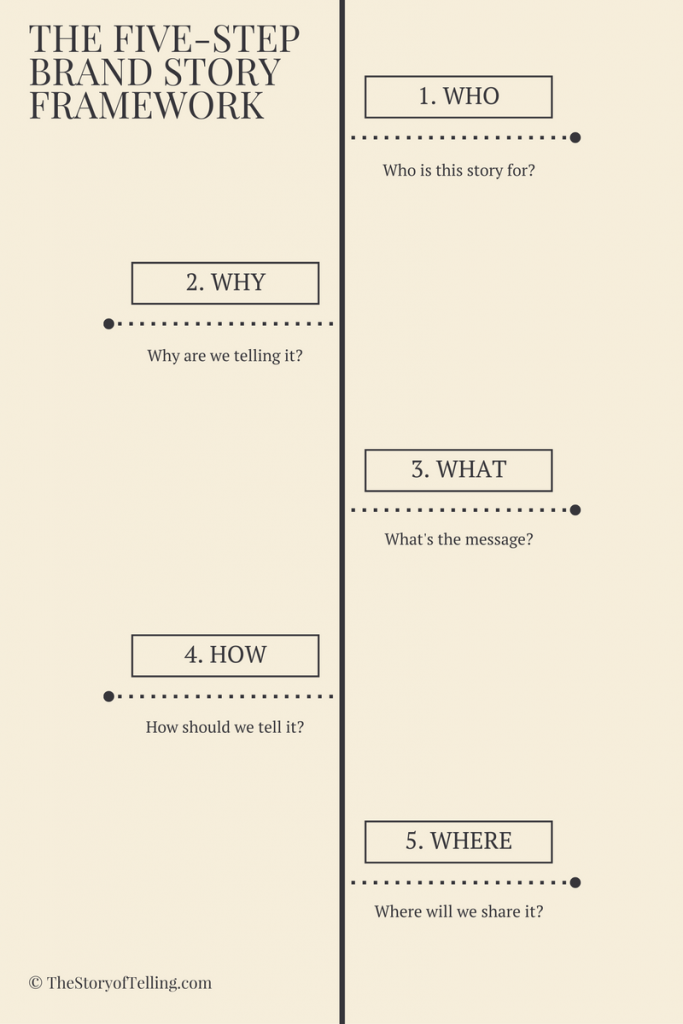Unlock the Magic in Your Story Now
Get the Free 20 questions to Ask Before Launching Your Idea workbook when you sign up for occasional updates.
Get the Free 20 questions to Ask Before Launching Your Idea workbook when you sign up for occasional updates.
Articles filed in: Marketing
A Common Sense Approach To Customer Insights
filed in Innovation, Marketing, Strategy
 Joanne is a small business owner. She operates a catering van that travels to local industrial estates, serving workers who don’t have easy access to high street cafes and fast food restaurants closer to town. Joanne’s business lives and dies on what she knows about her customers. So she makes it her business to know a lot about them.
Joanne is a small business owner. She operates a catering van that travels to local industrial estates, serving workers who don’t have easy access to high street cafes and fast food restaurants closer to town. Joanne’s business lives and dies on what she knows about her customers. So she makes it her business to know a lot about them.
She knows that Darren leaves home without breakfast before his kids are up. There is no time to pack lunch because he has to be on the road before rush hour traffic hits. Joanne knows that most days Darren stops at the convenience store for a Red Bull which he drinks in his truck before beginning a day of sawing, sanding and heavy lifting. Unlike the office workers in the city who work from 9-5 and lunch at midday, Darren will be famished by 10–which is why her van makes its rounds before 11. She knows he needs something he can eat with one hand while standing in his workshop between jobs, and that he won’t be looking for sushi or a paleo salad bowl. Joanne knows that Darren will knock off early on Friday and head to the pub for a few beers with his mates. He will do the garden on Saturday and take his boys to footie on Sunday.
These insights are invaluable to Joanne’s business. They influence her hours of operation, the products she stocks and the customer experience she provides. And she didn’t need a data analyst or an algorithm to uncover them.
We can learn as much from spending time with our customers as we can by looking for clues among surveys, demographics and data sets. It turns out that understanding comes from looking beyond data points that can be easily measured or plotted on a graph. How much do you know about how your customers behave or what they think about, prioritise, value and believe in?
Image by Michelle Ress.
How To Tell A Brand Story Customers Believe In
filed in Marketing, Storytelling
 It was a slow Wednesday morning, and the smell of freshly baked croissants wafted from the new French bakery. The store was almost empty, as were the display cabinets that should have been teeming with tempting pastries at this hour. The rock music blared. The bakery assistant who wore yesterday’s apron and a half-hearted smile, dropped the croissant she was bagging while remarking to a colleague that running out of croissants was ‘not a good look for a French bakery’. She haphazardly sealed the bag by scrunching the top with her fist. The customer paid $4.90 for the croissant. His coffee was half price because of a special promotion the bakery was running to attract more customers before 9.30am. What should have been a story about an exceptional croissant worth paying almost $5 for was broken because of the mediocre experience.
It was a slow Wednesday morning, and the smell of freshly baked croissants wafted from the new French bakery. The store was almost empty, as were the display cabinets that should have been teeming with tempting pastries at this hour. The rock music blared. The bakery assistant who wore yesterday’s apron and a half-hearted smile, dropped the croissant she was bagging while remarking to a colleague that running out of croissants was ‘not a good look for a French bakery’. She haphazardly sealed the bag by scrunching the top with her fist. The customer paid $4.90 for the croissant. His coffee was half price because of a special promotion the bakery was running to attract more customers before 9.30am. What should have been a story about an exceptional croissant worth paying almost $5 for was broken because of the mediocre experience.
Where did the bakery go wrong and how could they tell a better brand story? The biggest problem is the disconnect between their desire to pitch their product as a premium offering and supporting that story with nothing more than quality ingredients and high prices. The service design and delivery tells a different story. The empty display cabinets, discounting, poorly trained and presented staff and music that doesn’t enhance the mood, create a disconnect.
Our brand stories are not merely a way to get customers to come through the door and hand over cash—we want them to feel glad that they did. Every choice we make and everything we do must align with the story we want our brand to embody. Our actions have to support the message we want customers to believe.
The product, environment, service, and design each play a part in taking our customers on a journey we hope they’ll want to repeat. It’s our job to make sure the story is consistent from start to finish. We do that by being clear about exactly what our brand stands for and by making deliberate decisions that align with and support that vision.
Image by Emanuele Toscano.
The Forgotten Power And Purpose Of Story
filed in Marketing, Storytelling
 As business leaders and entrepreneurs, our motivations for understanding the power of story are clear—we want to create compelling narratives so more people will hear, believe and buy into our stories. We know we can use story to inform, educate, entertain, inspire and importantly, persuade people. We leverage story to perform valuable sales and marketing functions in our businesses.
As business leaders and entrepreneurs, our motivations for understanding the power of story are clear—we want to create compelling narratives so more people will hear, believe and buy into our stories. We know we can use story to inform, educate, entertain, inspire and importantly, persuade people. We leverage story to perform valuable sales and marketing functions in our businesses.
According to Bloomberg, in the dying days of the recent U.S. Presidential election, the two campaigns spent a combined total of $44.5 million on TV advertising in battleground states attempting to persuade voters to believe their story. Overall the Clinton campaign spent $137 million more than the Trump campaign on TV advertising during the 21 weeks leading up to the election. As we know, it wasn’t enough to ensure victory.
As marketers, we understand that now more than ever our potential audience can tune out when they want to, and so we leverage every channel we have to find new ways to make them listen. The irony is that while we’ve doubled down on ‘telling’ we’ve neglected the opportunity to use story as a discovery tool—we’ve forgotten the importance of actually listening to the stories of the people we want to serve.
If we deeply understand the stories of the people we hope to convince we have a better chance of telling a story they want to hear. But more important than that—we get the opportunity to put their interests at the heart of everything we do. Imagine the difference we could create if we invested as much in trying to understand as we do on trying to be heard.
Image by Francis McKee.
The Power Of A Value Strategy
 The city centre 7-Eleven fulfils the need of a particular customer. It’s a place for the every day, unplanned or forgotten last-minute purchases, where the worker returning home from late shift might grab headache tablets or a pint of milk. Convenience stores are not trying to deliver a premium customer experience. The business is designed to provide value by taking into account the context in which the customer will use its services. If accessibility and convenience are the pillars of the value strategy, then every business decision the company makes is filtered through that lens.
The city centre 7-Eleven fulfils the need of a particular customer. It’s a place for the every day, unplanned or forgotten last-minute purchases, where the worker returning home from late shift might grab headache tablets or a pint of milk. Convenience stores are not trying to deliver a premium customer experience. The business is designed to provide value by taking into account the context in which the customer will use its services. If accessibility and convenience are the pillars of the value strategy, then every business decision the company makes is filtered through that lens.
When a manager questions if stores should stock teddy bears or expensive perfume the answer is obvious. Everything the business does must align with the customer’s perception of the part it plays in his life.
It’s only when we are clear about how we best fulfil our customers’ needs that we can tell a story that resonates with them. In a world of the shiny, new next thing the power of consistently delivering on customers’ expectations is underrated.
Image by rpavich.
Why You?
filed in Marketing, Storytelling
 Marketing exists because we have more choices than we need and less trust than we want.
Marketing exists because we have more choices than we need and less trust than we want.
We tend to think of marketing as the thing we do last when we’re ready to close the sale—the tactics we employ and activities we undertake to convince the customer, tell our story or describe our value. It turns out that every decision we make is marketing. Everything we do (long before people are ready to make a choice) gives them reasons to care about or choose this over that, us over them.
What did you do today that will make you worth choosing tomorrow?
Image by rotesnichts.
The Five-Step Brand Story Framework
filed in Marketing, Storytelling
 Most people say the hardest part of telling their brand story is knowing where to begin. That’s because we start in the wrong place, with the wrong question—at the ‘how to’.
Most people say the hardest part of telling their brand story is knowing where to begin. That’s because we start in the wrong place, with the wrong question—at the ‘how to’.
Instead of wondering what we should say, we need to start our storytelling by asking who the story is for, and then by asking why this story will resonate with that particular audience.
Here’s the simple five-step framework to guide you through the brand storytelling process.
1. WHO —> 2. WHY —> 3. WHAT —> 4. HOW —> 5. WHERE
It’s only by understanding who for and why that we get to a better how.

Download The Five-Step Brand Story Framework to get started.
Image by Sebastian Rieger.
Conversion Vs. Connection
filed in Marketing, Storytelling
 The sales assistant took the time to explain the candle manufacturing process, brand values and founding story to the customer who was looking for a special gift for a friend. The customer, who had been buying this brand for more than ten years left delighted, with a beautifully wrapped $42 candle. And yet the company has no idea who she is and no way of continuing the conversation with her. No way to ask for input on new products and no way to tell her about special offers. No way to understand what she might want next and no way to add more value to her life—which of course would ultimately impact their bottom line.
The sales assistant took the time to explain the candle manufacturing process, brand values and founding story to the customer who was looking for a special gift for a friend. The customer, who had been buying this brand for more than ten years left delighted, with a beautifully wrapped $42 candle. And yet the company has no idea who she is and no way of continuing the conversation with her. No way to ask for input on new products and no way to tell her about special offers. No way to understand what she might want next and no way to add more value to her life—which of course would ultimately impact their bottom line.
Our sales and marketing plans are mostly optimised to convert now. We don’t think about the next sale while we’re making this one as often as we could or should.
Converting an enquiry to a sale seems like a big win in the moment, however, it’s also an important opportunity to deepen our connection with customers. Embracing that privilege is one of the surest ways to grow a business.
What difference would it make to our businessess if we questioned how we could we deepen customer connection during every interaction?
Image by Massachusetts OTT
How To Leverage Results Based Marketing
filed in Marketing, Storytelling
 In sales and marketing and in life we devote an extraordinary amount of time to finding the words to describe the value we create. We labour over marketing copy, taglines and slogans that will attract, persuade and entice.
In sales and marketing and in life we devote an extraordinary amount of time to finding the words to describe the value we create. We labour over marketing copy, taglines and slogans that will attract, persuade and entice.
We get so preoccupied with ‘the marketing’ that we forget the first step in the marketing journey is to make a great product that people want and will value.
Three Steps To Leveraging Results Based Marketing
1. Make a great product that solves a real need or problem.
The only way to do this is by understanding your prospective customer.
2. Get one person, then another, then twenty to use and recommend your product or service.
Airbnb started with three guests in the founder’s apartment.
3. Show the world the impact your product has on the people who use it. Tell their story.
Use case studies, customer stories, images and testimonials.
You don’t have to work so hard to tell a story that’s true. Let your results speak for themselves.
Image by sinkdd.
Acts Of Marketing
 The tight-lipped cabin crew wearing crumpled uniforms pass out miniature bags of pretzels to the passengers—the only snack included in the ticket price of the five-hour flight. On the world’s largest airline everything that would make the journey more pleasant is extra. Profit margins trump empathy and generosity at every turn, and it shows—even in the posture of the staff who should be proud to work for the company.
The tight-lipped cabin crew wearing crumpled uniforms pass out miniature bags of pretzels to the passengers—the only snack included in the ticket price of the five-hour flight. On the world’s largest airline everything that would make the journey more pleasant is extra. Profit margins trump empathy and generosity at every turn, and it shows—even in the posture of the staff who should be proud to work for the company.
It’s no surprise then that it doesn’t feature in the list of the Top 100 Airlines.
Contrast that to the smartly dressed Qantas team who set the stage by welcoming every passenger on board by name. Hot meals served with smiles, pillows, blankets, headsets and entertainment help every passenger to feel understood and valued regardless of where they are seated in the cabin.
Every day and in every moment we get to choose whether to deliver the minimum required or whether to delight. And those choices and resulting actions are acts of marketing that say more about our brand than any press release or piece of propaganda ever can.
Image by Dr Lam.
 When we moved house a year ago, we had the bathroom floor tiles professionally cleaned. Exactly one year on I got a message from the company about a special offer. At first glance, I thought this was a helpful reminder and smart marketing on the part of the cleaning company who had anticipated my needs. But my opinion changed when I realised the special offer was for carpet cleaning. We don’t have any carpets in our home.
When we moved house a year ago, we had the bathroom floor tiles professionally cleaned. Exactly one year on I got a message from the company about a special offer. At first glance, I thought this was a helpful reminder and smart marketing on the part of the cleaning company who had anticipated my needs. But my opinion changed when I realised the special offer was for carpet cleaning. We don’t have any carpets in our home.